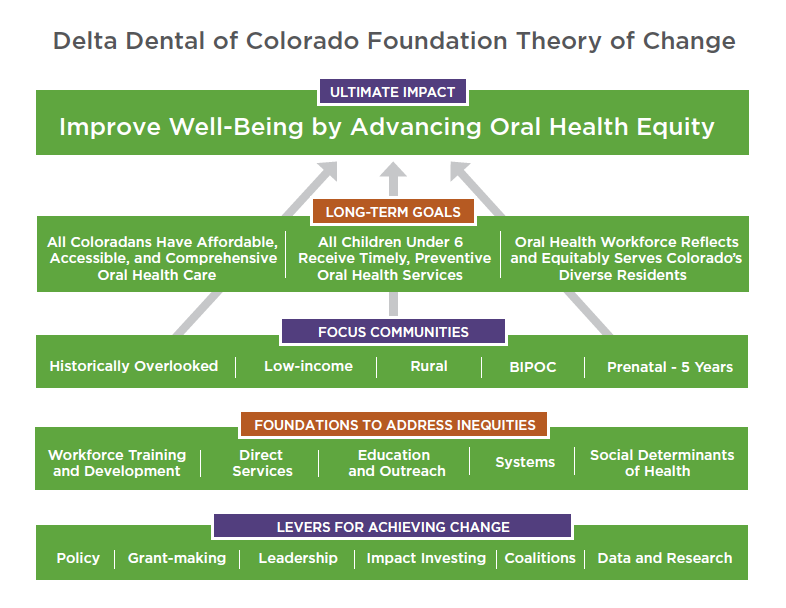Workforce
Diversifying the oral health care workforce helps us achieve greater health outcomes for all. According to the Colorado Health Institute, Black and Hispanic patients with providers of the same race are more likely to be satisfied with their health care overall and consistently seek preventive care.
The highest-paying positions in the oral health care field are disproportionately represented by white professionals, while lower-paying positions are conversely represented by professionals of color.
Through our workforce investments, we hope to provide new avenues for communities of color to enter into and advance within the oral health care industry.
the Data
of dentists in Colorado are white, non-Hispanic.
Source: Colorado, 2018, American Community Survey
of dental assistants in Colorado are people of color, with Latinx individuals comprising 34.4% of that total number.
Source: Colorado, 2018, American Community Survey
of Coloradans reported unfair health care treatment due to race or skin color.
of white dental students graduate with no debt, compared to 10% of Hispanic/Latinx students.
Source: American Dental Education Association, Survey of Dental School Seniors, 2017 Graduating Class
Our Goal

Portfolio Overview
Grow Dental Hygiene Programs
$4,973,690
$4,973,690
Scholarships
$180,000
$180,000
Recruitment and Retainment
$150,000
$150,000
Post Graduate Employment
$911,400
$911,400
Pipline Programs
$939,113
$939,113
Data Collection
$378,005
$378,005
Career Pathways
$351,000
$351,000
Grants by Occupation of Focus
0
%
Dental Assistant
0
%
Dental Hygienist
0
%
Dentist
0
%
All Three


